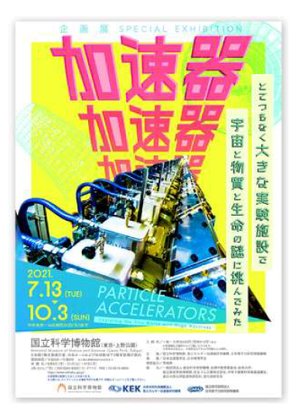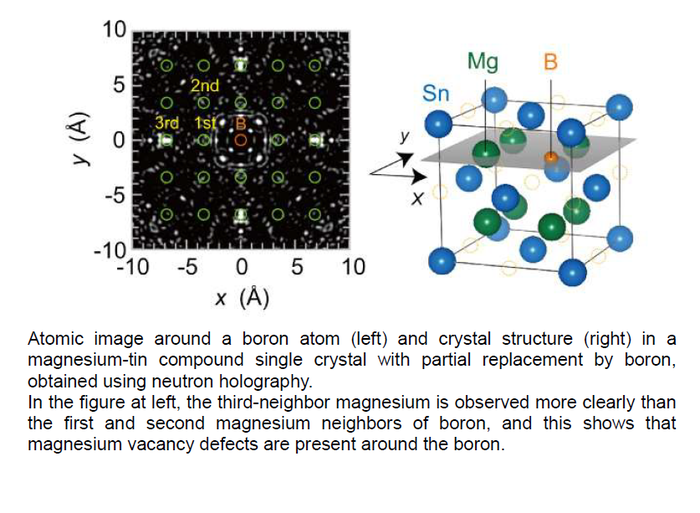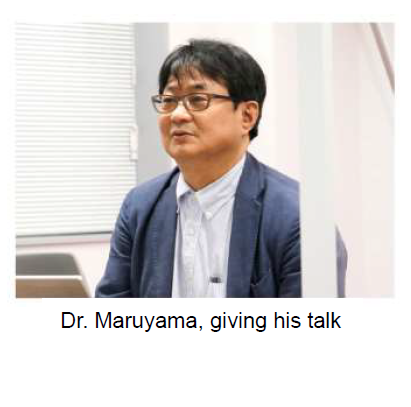J-PARC News June 2021 (Issue #194)
■Special Exhibition to be Held at National Museum of Nature and Science (July 13 – October 3)
A special exhibition "Particle Accelerators: Challenging Mysteries of the Universe, materials and lives with Huge Machines" will be held at the National Museum of Nature and Science, Tokyo (Ueno Main Building). The exhibition will focus mainly on the large accelerator facilities at J-PARC and the KEK Tsukuba Campus. It will present, in an easy-to-understand way, the history of accelerator development in Japan, basics of accelerators, cutting-edge research exploring the mysteries of the universe and research results used in familiar places. We look forward to welcoming you.
materials and lives with Huge Machines" will be held at the National Museum of Nature and Science, Tokyo (Ueno Main Building). The exhibition will focus mainly on the large accelerator facilities at J-PARC and the KEK Tsukuba Campus. It will present, in an easy-to-understand way, the history of accelerator development in Japan, basics of accelerators, cutting-edge research exploring the mysteries of the universe and research results used in familiar places. We look forward to welcoming you.
To prevent the spread of COVID-19, the National Museum of Nature and Science currently requires online reservations for admission. For details, please visit the following site. https://www.kahaku.go.jp/
■Accelerator Division Wins Suwa Award (May 27)
The Accelerator Division of the J-PARC Center won the FY2020 Suwa Award from the Foundation for High Energy Accelerator Science. This award recognizes the division's achievement of 1 MW beam acceleration at the J-PARC’s 3 GeV synchrotron.
■Dr. Chris J. Densham Wins Physics Prize from Institute of Physics (U.K.)
Dr. Chris J. Densham at Rutherford Appleton Laboratory, United Kindom, who has been designing and developing neutrino production target, beam window, and other components, wins the 2021 Institute of Physics Prize for Outstanding Professional Contributions to accelerator science and technology. This prize recognizes his achievements in areas such as development of high-intensity beam targets and research on radiation damage.
designing and developing neutrino production target, beam window, and other components, wins the 2021 Institute of Physics Prize for Outstanding Professional Contributions to accelerator science and technology. This prize recognizes his achievements in areas such as development of high-intensity beam targets and research on radiation damage.
For details, please refer to the following article.
■Achievement of Lowest Thermal Conductivity by Controlling Single Crystal Defects with Chemical Pressure: Elucidating Role of Boron-Doped Magnesium-Tin Compounds with Neutron Holography (May 11, Press Release)
Magnesium-tin compounds show promise as a thermoelectric material for converting thermal energy into electric energy, and research is being done to improve thermoelectric conversion performance for practical applications. One way to improve performance is to reduce thermal conductivity, and this can be achieved by increasing vacancy defects in a crystal, where a position that is usually filled with a magnesium atom is left vacant.
A group led by Dr. Wataru Saito of Tohoku University tried to increase the number of magnesium vacancy defects by partially replacing magnesium with boron. It was also shown that magnesium vacancy defects exist around boron based on observations using neutron holography, which enables high-sensitivity analysis of atomic image around light elements such as boron, hydrogen, and oxygen. Neutron holography was carried out using the BL10 neutron instrument at J-PARC. By combining this with the results of X-ray diffraction and transmission electron microscope observation, it was shown that vacancy defects and defects called dislocations are increased by "chemical pressure" on the material due to replacement of some atoms with atoms of a different size, and low thermal conductivity was obtained as a result. There are high expectations for further progress in this research toward practical applications in power generation, with the ultimate aim of realizing an energy-saving, low-carbon society.
■Realization of Low-Temperature, Fast Conduction of H- Ions (June 3, Press Release)
Ionic conductors are used in a variety of applications, including fuel cells, solid-state batteries, and chemical sensors, and they make a major contribution to improved device performance by providing high conductivity over a wide temperature range. Many ionic conductors exhibit high ionic conductivity in highly-symmetric crystal structures stable at high temperatures, but change to distorted structures with low symmetry below certain temperatures, resulting in drastic drop of their ionic conductivity. In recent years, conductors of H- ions (hydrogen atoms with a negative charge) have also attracted attention, but good H- ion conduction has only been achieved at high temperatures of 300°C or higher.
Dr. Hiroshi Kageyama of Kyoto University et al. focused on hydride compounds containing halogens (chlorine, bromine, iodine) of the form Ba2H3X (X = Cl, Br, I), and discovered that they exhibit outstanding conduction of H- ions in the low temperature range from room temperature to 300℃. They also examined the crystal structure to find the origin of such H- ion conduction. In Ba2H4 where X = H (i.e., BaH2), it is known that H- ionic conductivity suddenly drops when the material changes to a distorted structure with low symmetry at or below 450℃. Thus, in Ba2H3X, it is speculated that the highly-symmetric structure is maintained due to the anion ordering, and thus providing outstanding H- ion conduction paths even at low temperatures. This view is also supported by the results of calculation from first principles based on the precise crystal structure derived from the neutron diffraction data obtained with J-PARC's Special Environment Neutron Powder Diffractometer (SPICA). There are high expectations for applications in electrochemical devices, and new catalysts and syntheses, employing H- ion conduction near room temperature.
■J-PARC Safety Day (May 28)
At the J-PARC Center, we learned a lesson from the radioactive material leak incident which occurred in May 2013, and we have established a Safety Day in May of each year to give everyone a chance to think about safety.
Safety Day for FY2021 was held in a remote live format, with 310 participants. After commending examples of good practice in FY2020, Dr. Norio Tani of Accelerator Section II gave a presentation on "Work Management at the RCS Facility."
Next, there was a talk by Mr. Satoru Nabeshima from the Engineering & Maintenance Center of All Nippon Airways Co., Ltd.(ANA) entitled "Assertion Culture Supporting Safety in the Maintenance Departments of the ANA Group." Assertion is a communication skill that ensures a speaker and listener respect each other and express themselves honestly, and specific examples were given of the cycle followed in the ANA Group's Maintenance Departments: ask for the assertion, voice the assertion without hesitation, and appreciate the assertion.
■J-PARC Hello Science "A New Type of Neutrino exists?! (Continued)" (May 28)
Tokai Village was designated as a municipality threatened by the spread of COVID-19, so this month's J-PARC Hello Science event was held online only, and there were 16 participants.
At the "a New Type of Neutrino exists?!" event held in February, Dr. Takasumi Maruyama of the Particle & Nuclear Physics Division explained the possible existence of sterile neutrinos based on the Standard Model of elementary particles. There were many enthusiastic questions so the event went over the allotted time, but this time the explanation focused on experimental details after an overview of the theory. There is a possibility that neutrino oscillations involving sterile neutrinos happen at much closer range than ordinary neutrino oscillations. Thus, an experiment was described which aims to capture neutrinos after oscillation by setting up a 50-ton liquid scintillator detector on the third floor, 24 m away from the neutron source of the Materials and Life Science Experimental Facility, which produces neutrinos as a by-product. In this experiment, we are searching for oscillations involving sterile neutrinos by investigating the energy distribution of neutrinos using the scintillation light produced by the capture of neutrinos after oscillation.
Sterile neutrinos are sensitive only to gravity, and if their existence is demonstrated, it may be possible to achieve revolutionary results elucidating "dark matter," an unknown type of matter that exists in quantities multiple times greater than the matter of the familiar world composed of protons and neutrons.
■Information
1. Analysis at J-PARC of samples from the asteroid Ryugu collected with Hayabusa2
Details will be announced on our website later and the special edition of J-PARC News will be published.
2. Appearance by J-PARC researchers at the Knowledge Capital Super School (July 3, 10, 17)
This is a program where participants acquire genuine knowledge from specialists in science and other areas. They think together and engage in dialog with these experts. J-PARC researchers will act as instructors for three days. (Online, free to join, reservations not required)
For details, please refer to the following article. https://kc-i.jp/activity/chogakko/researcher/
■Sanpo-michi #11: All the Chimaphila umbellatas have finished blooming
To write this article on Chimaphila umbellatas, our public relations staff visited their habitat at the Nuclear Science Research Institute on June 8. Chimaphila umbellatas grow in dry forests near the coast, and the site we visited, in the northern part of Ibaraki Prefecture, is at the plant's southern limit. Normally the pink flowers bloom from early to late June in this area.
In Ibaraki Prefecture, this plant has been designated as a 1A endangered species at high risk of extinction in the very near future. This is an unusual plant, classified as an evergreen, in which multiple flowers about 2 cm in size bloom on top of a thin stalk about 10 cm high.
During lunch break, five staff members searched for this plant over a wide range of forest. Although plants were found with leaves similar to Chimaphila umbellatas, there were no flowers blooming anywhere. We worried the plants might be extinct, but when we consulted with a plant expert, he said the flowers may have bloomed particularly early this year.
This time, we can only show you the leaves of Chimaphila umbellatas, but we will keep our eyes out for next year so we can show these lovely flowers to all of you.





